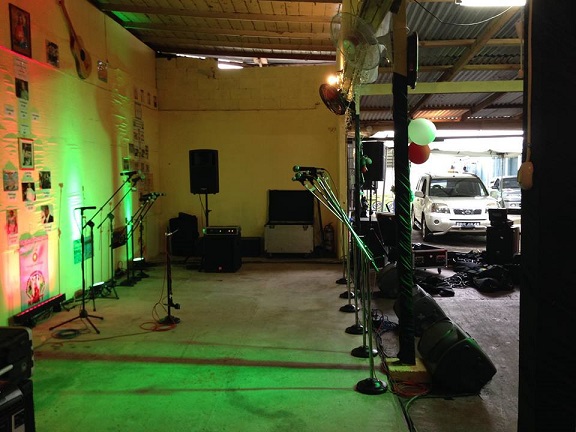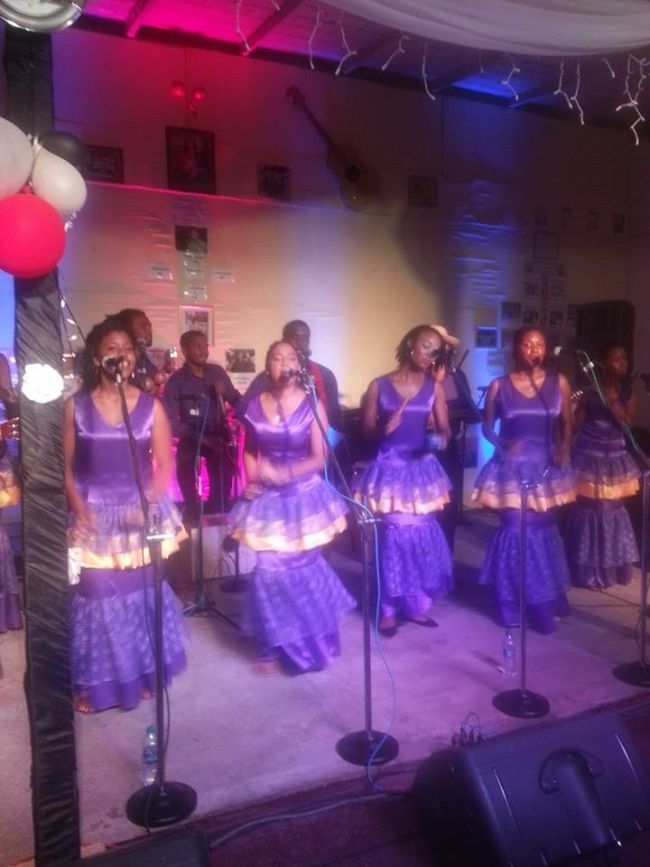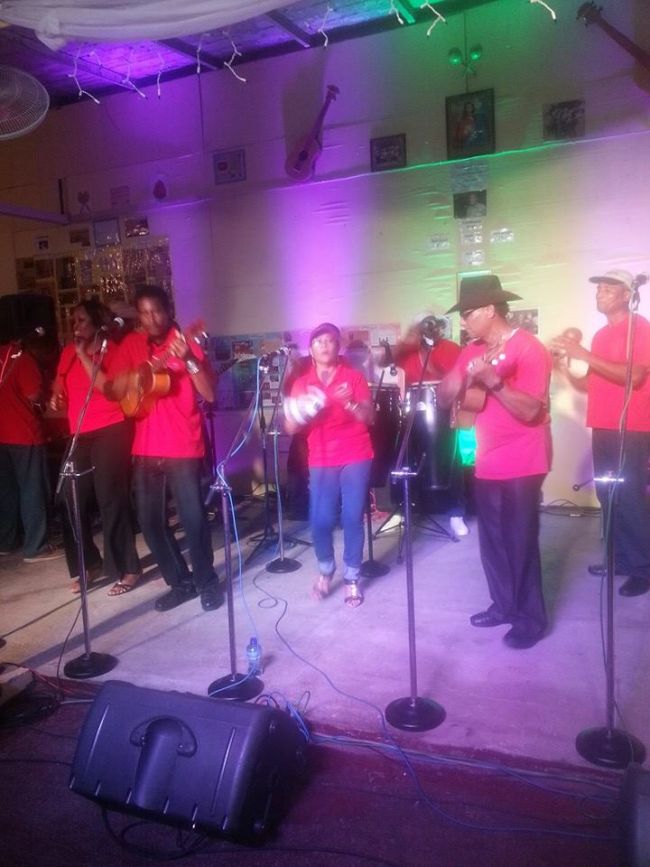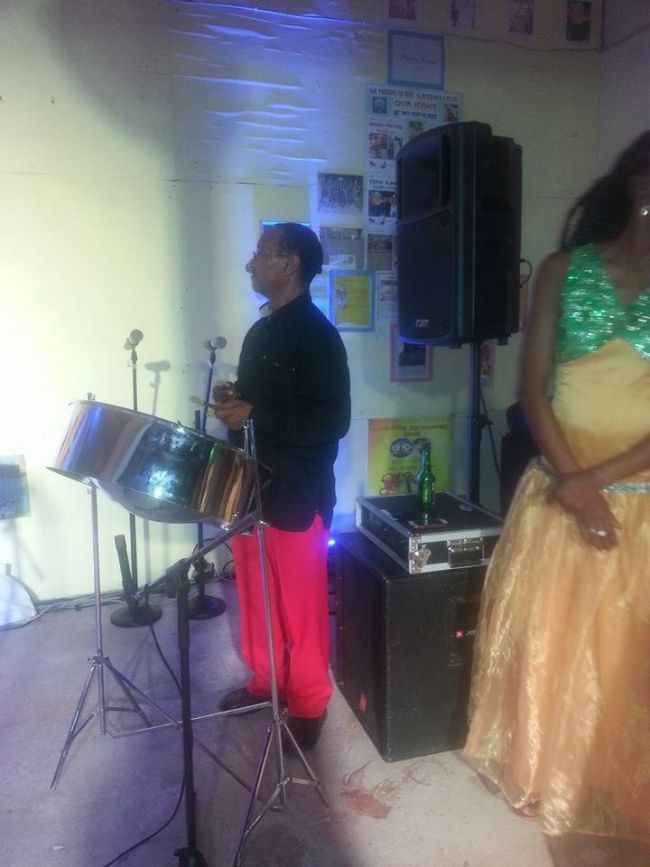In Local Events and Ting In Tobago ~ Blue Food Festival - 10am to 6pm Sunday 19th October ~ Bloody Bay Recreational Grounds Allyur does mek me laugh on here:
Sunday 19th October ~ Bloody Bay Recreational Grounds Allyur does mek me laugh on here:So at no time could you park inside but behind the nagar site...
Who go interfere with your Tida ?
Park de $%#& car next to the muff .
4th Booth, pepper roti bess !


I think rspann have it down. He has learnt to communicate with it........

 In Heritage Week:
In Heritage Week:
This is Hyarima. He is the Last War Chief of Trinidad
Chutney Soca Moments ~ Happy Birthday to Nisha B - 18th Oct 2014
In year 2000 Nisha Bissambhar was the youngest performer
to make the Grand Finals
Remember Back in de days De Corn Soup Man in Arima
De Corn Soup Man in Arima Young Superman
Young SupermanWhile his father took in the Naparima College/Carapichaima game in the Secondary Schools Football League (SSFL), this young man found another way to entertain himself or perhaps lend a hand to his father’s side.
 Beer is a Carib
Beer is a Carib San Fernando Hill
San Fernando HillIs approximately 200 metres high and 100 acres in size. The site offers panoramic views of San Fernando, Point Lisas and Pointe-a-Pierre, as well as the Gulf of Paria.
It is a natural landmark that has a lush vegetation of semi-evergreen forests and wild flowers, including the Almond tree, Bottle Brush, African Tulip, Dwarf Poui, Mohogany, Roble, Accasia and Luciania trees.
Picnic tables are spread over the property making this a perfect spot for couples and families to enjoy the breathtaking view together.
A visitor centre on site offers information about the history, geology, flora and fauna of the hill. The grounds can also be rented for parties and weddings.
 Some Weekends Fun
Some Weekends Fun
Looking for something to do on weekends? “ZIP-ITT Adventure Tours” in Macqueripe Chaguaramas.
Open from 10am- 4:30pm. We are closed on Mondays.
Cost is $140 per person, no bookings required.
Call 381-8543 for more information.
At Chaguaramas Broadwalk ~ What a Flipping Kiss ~ Rainbow and Love At Grand Bazzar Interchange (20-10-14) ~ A Christmas Tree made out of Traffic Lights
At Grand Bazzar Interchange (20-10-14) ~ A Christmas Tree made out of Traffic Lights In Toco Waters
In Toco Waters
Sea urchin...that lives in the Toco waters

Chiton or mostly known as Pacro from the shores of Toco
5 Trinidad and Tobago Heroes1. Sandy was an enslaved African who led the first major slave revolt in Tobago in 1770. Sandy, from all indications, was a perfectly built enslaved African who despised the cruel system where his people suffered all unimaginable forms of brutality.

He killed his slave master and organized a number of meetings with fellow enslaved Black people to plan the revolt before leading his fighters in launching an attack on the British at Fort James in Plymouth to capture arms and ammunition. He then moved his fighters to the great house on Mount Irvine’s sugar plantation
The revolt spread to different parts of Tobago and forced the British authorities on the island to call in battleships from Grenada to quell the revolt. Sandy and some of his followers were never captured but escaped to the Toco/Matelot area of Trinidad from what is now called Sandy Point at Crown Point.
2. Audrey Layne Jeffers was born in Woodbrook, Trinidad and Tobago, in 1896. Jeffers was brought up in a comfortable home and given the best education available at the time for girls. Although she excelled in many areas, her eyes were focused on a career in social sciences.

After graduating from primary school, Jeffers went abroad to further her education and couldn’t return to Trinidad until the end of World War I. When the war ended, she returned to the island and dedicated her life to providing social services to the less fortunate in the society. She founded the Coterie of Social Workers. This organization was later to become one of the country’s most effective organizations for attending to the needs of underprivileged children, with an emphasis on supplying free meals to them.
For nearly 50 years, Jeffers ran the institution with the help of dedicated women who assisted her in forming branches of the coterie in many parts of Trinidad.
3. Jonas Mohammed Bath was a Black Muslim priest and member of the Koramantyn tribe in Africa. He arrived in Trinidad in 1805 as an enslaved African and was put to work on the construction of Fort George, Port of Spain.

As a Muslim priest, he had a certain amount of influence over his fellow Muslims working on the construction of the fort, so he was appointed as an overseer or “colonial negro” with pay. From the money he received while working on the fort, he acquired enough to pay for the release of 200 of the enslaved Africans on the island.
After the completion of the fort, he purchased several acres of land at Santa Cruz Valley, which he named Mizra Estate after the Arabic word for a country estate. He died in September 1838, one month after the emancipation of the enslaved Africans in Trinidad.
4. Kwame Ture, also known as Stokely Carmichael, was a Trinidadian activist who was active in the 1960s U.S. Civil Rights Movement, the Black Power Movement and later the global Pan-African Movement. Ture rose to prominence first as a leader of the Student Nonviolent Coordinating Committee (SNCC), later as the honorary prime minister of the Black Panther Party and finally as a leader of the All-African People’s Revolutionary Party.

Born in Port of Spain, Trinidad, he was 11 years old when he and his parents moved to Harlem, New York. He later attended Howard University in Washington, D.C., and became dedicated to fighting the struggles of Black people across the world.
After there were allegedly several attempts on his life in the U.S., he moved to Guinea in 1968. Upon returning to the U.S. in 1970, he declared that his return was to wage a movement against the poison of drugs in the Black community. He later died from cancer in 1998. Ture was credited for coining the phrase “Black Power” that was used all over the world.
5. Cyril Lionel Robert James (Jan. 4, 1901 – May 19, 1989), best known as C.L.R. James, who sometimes wrote under the pen name J. R. Johnson, was an Afro-Trinidadian historian, journalist, socialist theorist and essayist. His works are influential in various theoretical, social and historiographical contexts.

His work is a staple of subaltern studies, and he is considered a pioneering and influential voice in postcolonial literature.
A tireless political activist, James’ writing on the Communist International stirred debate in Trotskyist circles, and his history of the Haitian Revolution, The Black Jacobins, is a seminal text in the literature of the African Diaspora.































